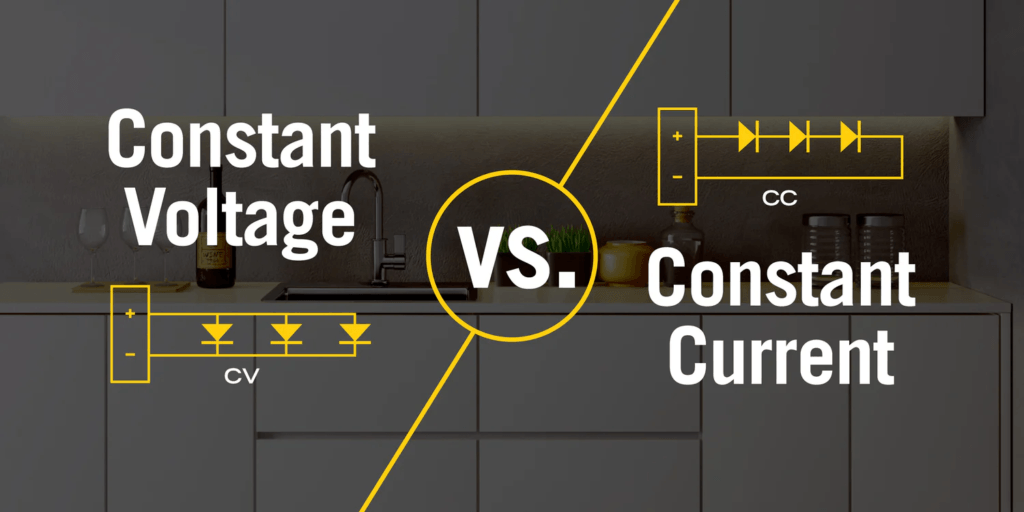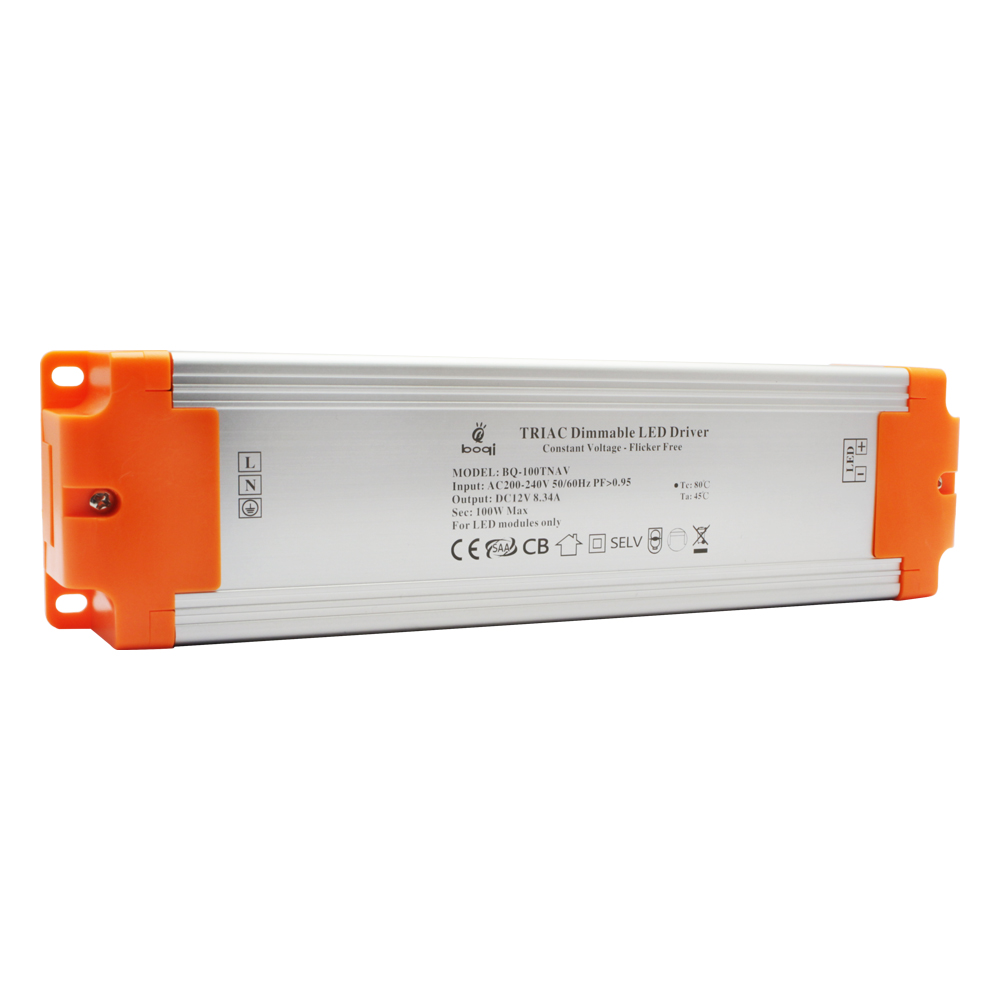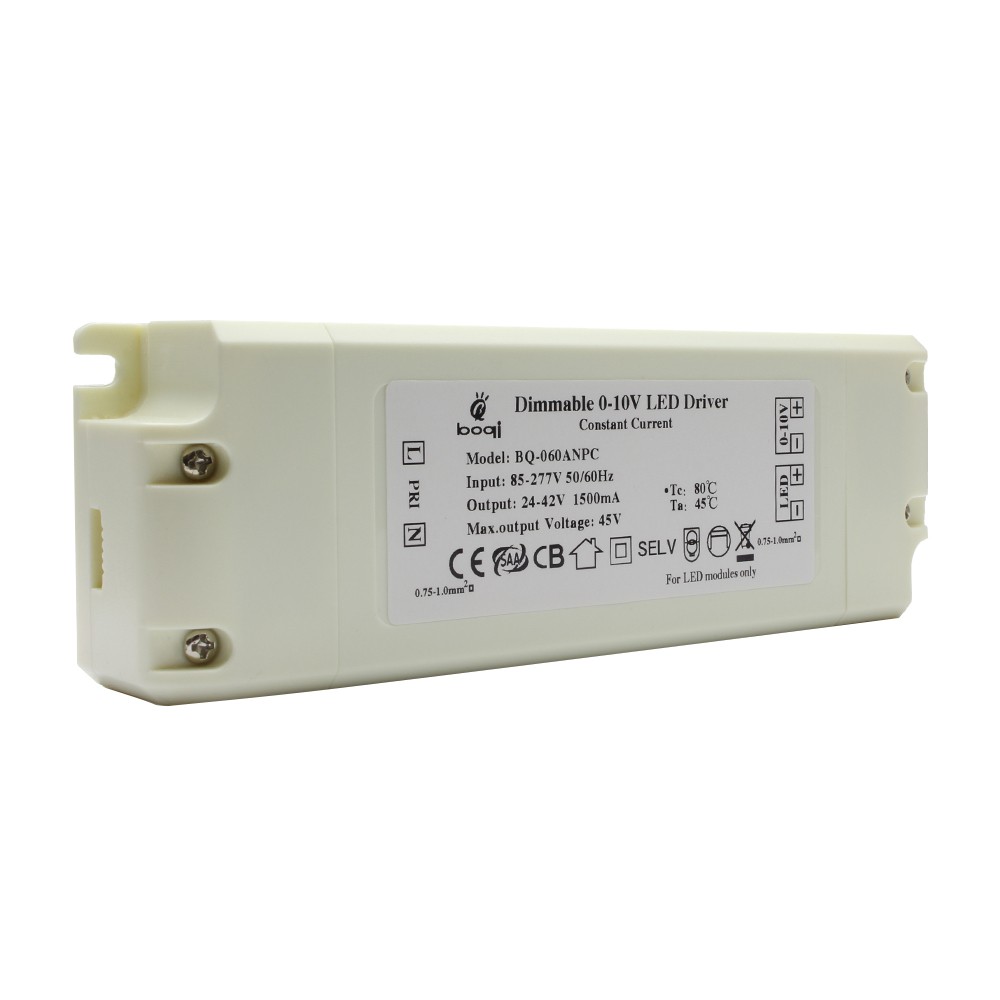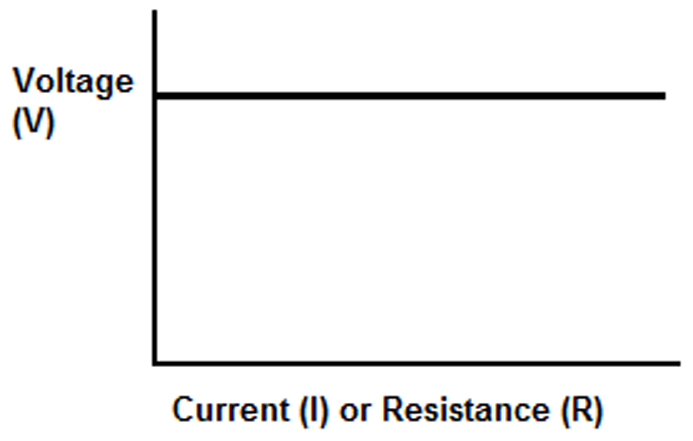LED 技术以其高效性和多功能性为照明带来了革命性的变化,但如果选择了错误的 LED 驱动器 会导致亮度不一致、过热或寿命缩短。 恒定电压 和 恒流 LED 驱动器 是两种主要类型,分别针对特定的 LED 应用而设计。让我们一起来探讨它们的区别、优点和最佳使用案例,帮助您根据自己的 LED 照明需求做出明智的选择。
恒压和恒流 LED 驱动器有何区别?
恒压驱动器 在保持稳定电压输出的同时,允许电流根据所连接 LED 的需要而变化。这种驱动器类型通常设置为固定电压,如 12 伏或 24 伏对于可以并联所有 LED 的 LED 设置来说,它是理想之选。常见应用包括 LED 灯条 和一些 LED 模块,稳定的电压输入对它们至关重要。
相比之下 恒流驱动器 在保持电流输出稳定的同时,允许根据需要调整电压。这些驱动器根据其提供的特定电流进行额定,例如 350 毫安、700 毫安或 1A适用于大功率 LED 应用。通过保持稳定的电流,这些驱动器可防止过热并延长高输出 LED 灯具的使用寿命。

我需要恒压还是恒流 LED 驱动器?
选择合适的 LED 驱动器取决于您的照明应用和 LED 类型。 恒压驱动器 安装通常更简单,因此在住宅和 DIY 设置中很受欢迎,如 可调光 LED 灯条 和装饰照明。这些驱动器一般价格较低,可为并联的多个 LED 供电。

另一方面 恒流驱动器 对于需要精确亮度和长期稳定性能的应用,如建筑照明、商业标牌或 LED 显示屏,它们是理想之选。通过保持电流稳定,它们能为串联的 LED 提供一致的光输出,并延长大功率 LED 的使用寿命。

CC(恒流)和 CV(恒压)LED 有什么区别?
LED 可与不同类型的驱动器兼容,具体取决于其设计和应用需求。 CC LED (恒流)需要稳定的电流供应,以避免闪烁或亮度不均等问题。这些 LED 的优点是 恒流驱动器 在对亮度一致性和可靠性要求极高的环境中使用。

CV LED (恒压)则在固定电压电源下运行最佳。它们常用于简单、低功耗的 LED 设置,稳定的电压输入可确保性能稳定。例如 LED 灯条和其他并联接线的 LED,在这种情况下,可以直接从电路中添加或移除 LED,而不会有性能波动的风险。

为什么在某些应用中恒定电流比恒定电压更好?
恒流驱动器 这些驱动器的优点使其成为高要求照明应用的首选。通过保持稳定的电流,这些驱动器可确保系列中的每个 LED 都在最佳亮度下工作,而不会过热。这种控制水平在大功率设置中至关重要,因为即使是微小的电流波动也会影响亮度和使用寿命。对于商业或工业装置,恒定电流对于保持 LED 的亮度和寿命至关重要。 质量和耐用性 随着时间的推移,LED 系统也会发生变化。
不过,恒压驱动器在较简单的设置中仍是理想之选,尤其是与内置电阻器控制电流的 LED 一起使用时。在这种情况下 恒压驱动器 提供可靠的照明性能,无需复杂的电流管理。
恒压与恒流 LED 驱动器的优缺点
| 驱动程序类型 | 优势 | 缺点 |
|---|---|---|
| 恒定电压 | 安装简单,适合并联布线,是可调光装置的理想选择,而且价格通常也比较实惠 | 如果 LED 不是为 CV 设置而设计,可能会导致亮度不一致 |
| 恒定电流 | 确保稳定的亮度和使用寿命,是大功率应用的理想之选 | 一般比较昂贵,需要特定的 LED 配置 |
每种 LED 驱动器的最佳应用
- 恒压驱动器:这些驱动程序通常用于 住宅用 LED 灯条这些 LED 灯适用于各种应用场合,包括装饰性安装和不需要高精度的标识。它们在 LED 并联的环境中很受欢迎,可以承受微小的电流波动。
- 恒流驱动器:适用于要求稳定亮度和效率的应用,例如 商业照明、建筑项目和工业标识.它们非常适合需要稳定电流以防止过热并确保使用寿命的高输出 LED。
技术考虑因素:效率、兼容性和使用寿命
选择正确的 LED 驱动器 这涉及到对效率、与 LED 设置的兼容性以及长期耐用性等因素的评估。恒压驱动器通常 调光 适用于需要电压控制的设置,例如 12V 或 24V LED 灯条.然而,在大功率设置或专业照明装置中,恒流驱动器可为系列中的每个 LED 提供可靠、均匀的亮度,从而延长 LED 的使用寿命,并在要求更高的应用中提高效率。
摘要
在恒压和恒流 LED 驱动器之间做出选择,归根结底要看您的具体照明需求。 恒压驱动器 适用于简单实惠的直接 LED 设置,例如 LED 灯条 或 装饰照明. 恒流驱动器 更适合大功率应用,具有稳定性、亮度一致性和更长的使用寿命。有了合适的驱动器,您就能最大限度地提高 LED 照明的性能和效率,确保持久可靠的照明。







